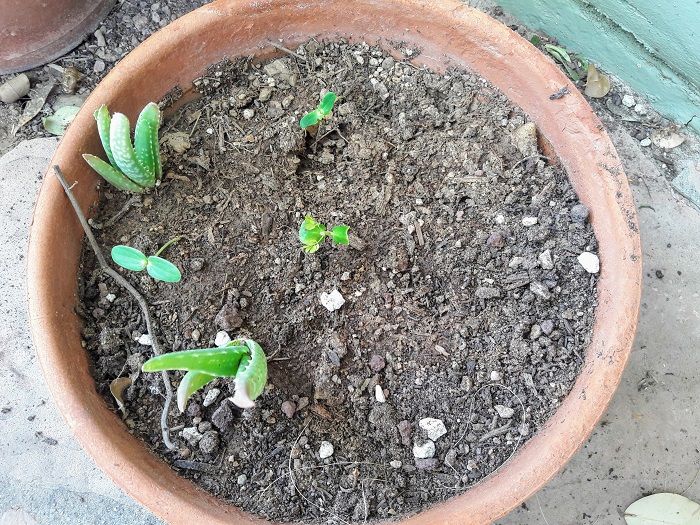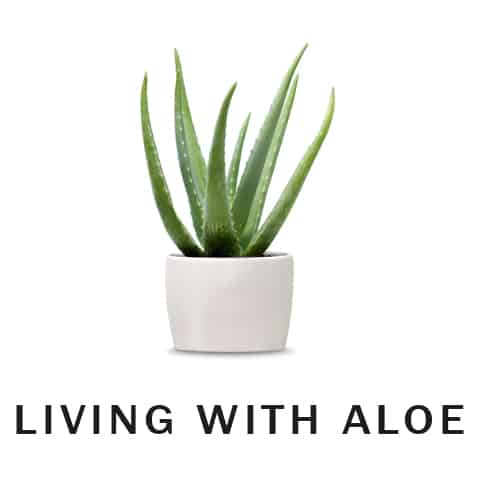
Whether you are a beginning gardener, or have been gardening for some time, you will find that growing plants from seed can be both satisfying and enlightening. When it comes to the aloe plant, which features several varieties, this form of cultivation permits gardeners to grow rarer aloes.
To find seeds for rarer aloe plants, you should contact a local botanical garden and ask where you can obtain the seed. You may also extract the seed from more common plants, provided the plant is at least four years old. However, extraction times can vary, as some species of aloe do not mature until they reach nine or ten years of age.
1. Extract the Seeds from the Pods of a Mature Plant
If your plants have matured, you will see the seeds inside the flowers after the petals brown and fall from the plant. The seeds, which are flat, appear grayish-brown to black. Once a plant flowers, it can produce the seeds you may need. Don’t collect any seeds that are grayish or white, or lighter hued, as they will not germinate. To extract the darker seeds, split the pod. The pods will appear brownish-green when they are ready to harvest. Don’t split the pods until they take on this color. Extract the seeds from the pods over a basin so you can catch the seeds.
2. Store the Seeds for Propagation
Aloe seed propagation can begin right away, or it can wait. If you want to sow the seeds outdoors, you can collect seeds until the spring. Save the seeds in a paper envelope, and store them in a dark and cool space. If you want good results, you should use the seeds before the end of a year.
3. Plant the Seeds in a Loose Medium
Most gardeners love growing aloe from seed, as the seeds produce sprouts easily. Just make sure you use the right medium for the best results. A mix of half peat and half sand will allow for good drainage. Remember that water can be a dire enemy of these desert succulents. Therefore, you don’t want to overdo it when it comes to the activity. To realize success, you need to plant seeds in a loose, drain-friendly medium that will not turn soggy, or attract weed or pathogen growth.
4. Use Flats for Planting
Desert dwellers like growing the seeds outside. However, if you are a beginning gardener, you may want to begin with container gardening. That way, you will have more control over the growth cycle, and can keep a better eye on the plants. While any container can be used for the seeds, try using flats, as they use less soil and are simpler to manage.
Lightly water the medium and spread the seeds about one inch apart. Follow by covering them with a light dust of sand. If you grow the seeds outside, the ideal temperature should be about 75 degrees Fahrenheit, or 23 degrees Celsius. Place the planted seeds in indirect bright light, wherever you choose to grow them.
Again, you need to be careful about giving the seeds too much moisture. Remember, these are desert plants, and can last a while without water. Therefore, use caution in this respect. Many growers mistakenly place a lid on containers or flats, and keep the growing seeds in plastic bag. This is done to promote germination.
However, if you do this with aloe and use a non-sterile medium, you may experience growth issues. This activity can trigger fungal diseases, which stop growth altogether or lead to death. Instead, mist the surface soil until the seedlings begin to sprout. Do this for about two to four weeks. If grown inside, the young seedlings should be placed on a heat mat until the root system starts to develop.
6 Tips for Growing Aloe Vera for Beginners
5. Water from the Bottom to Prevent Damping Off
When it comes to watering, water from beneath the seedlings to prevent damping off, or the deaths of the seedlings. Damping off, which results from fungal growth, can occur in various soil types and climates. The degree of damage to the seedlings depends on the specific fungus, the temperature, and soil’s moisture content. Seeds can get infected as soon as any moisture absorbs a seed’s coat or later, when the seed begins growing. The once healthy seedling will suddenly lose its color, then wilt, collapse, and die.
When damping off occurs among foliage plants, the leaves may wilt, or the plants may yellow. Roots of the diseased plants appear black or brown – proof that the plants have been soaked with water. Remember – the same conditions that favor seed germination also promote the growth of fungus, as both the roots and seeds of a plant must be kept moist and warm. That is why you need to make sure your seeds are placed in a drain-friendly medium.
6. Clean Out Used Pots Completely
If you are planting seeds in the garden, damping off can be prevented by planting fungicide-treated seeds. As noted, using a well-drained soil can keep seeds from dying. You should also space the seeds comfortably apart to prevent overcrowding. Always clean out pots completely before you reuse them. Discard contaminated or already-used soil, and do not repurpose it.
7. Gather the Tools and Products You Will Need
Now that you know the precautions, you can gather the items you will need to grow aloe from seeds. You will need sand, perlite, or peat moss. You may want to add a sterile compost to prevent fungal growth. Use a nursery flat, of about two inches deep, as well as a heat mat or fluorescent lamp. Other growing accessories include two-inch pots, a spoon, plastic wrap, and a bucket.
8. Mix the Medium
To begin, you can either combine two parts sand with two parts peat moss, or two parts sand with one- part perlite and one-part sterile compost – mix all of it in a bucket. Stir each ingredient, adding enough water to make a uniform and moderately moist medium.
Can I Use Sand Instead of Soil to Plant Aloe
9. Plant the Aloe Seeds and Place them in a Brightly Lit Space
Pack the mix inside a two-inch deep flat, filling it just below the top, about 1/4 inch. Plant the aloe seeds one inch apart on the sand mix, pushing them inside the mix, and covering them with a light dusting of sand. Place the flat on a level surface where it can receive eight to 10 hours of sunlight each day. If you do not have access to this type of space, use a fluorescent lamp.
10. Place the Flat on a Heat Mat and Cover with a Plastic Mat
Place the flat on a heat mat, set at about 70 degrees Fahrenheit (or 21 degrees Celsius). The heat mat should be switched on during germination. Add a sheet of plastic wrap over the flat to retain the warmth. If excess condensation forms, remove the wrap for several hours.
11. Mist the Seeds with Water
When the sand mix dries, mist the planted seeds. While you do not want the sand to dry out completely, you don’t want to drench it either. Sprouting, again, should occur, after about two weeks to a month, depending on the type of aloe.
12. Drizzle Water around the Sprouts and Transplant
When sprouting occurs, gently drizzle water around each sprout instead of misting, as you did with the seeds. Transplant the seedlings into separate two-inch pots, filled with the sand and perlite/compost or peat moss medium. Use a spoon for scooping the seedlings from the flat. Water with a tablespoon of water about twice a week, or three days apart.
6 Tips For Growing Aloe Vera From Seed
